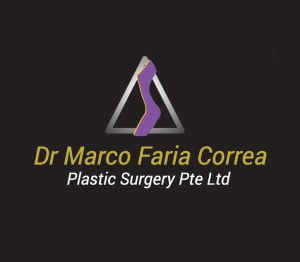- Sponsored Content

You could be eating a balanced diet, doing regular exercises, and may even have invested in some ‘special undies’, but the tummy bulge is stubborn. According to Dr Marco Faria Correa, the change in appearance is due to rectus diastasis, which is a case of abdominal wall separation. This happens when the linea alba – the connective tissue that runs in the middle of our abdomen, between our left and right abdominal muscles – widens. And it’s not just a female issue (hoorah!), it can happen to men, too.
Having a gap between the abdominal muscles compromises core strength and function. Indeed, contrary to popular belief, the core isn’t just about the abs. It encompasses a complex system involving the entire anterior abdomen, pelvic floor muscles, glutes, and the mid and lower back. The rectus abdominal muscle – a long, vertical muscle running down our body’s midline – plays an important role in our daily activities such as standing, sitting, lifting, pushing, and walking. Additionally, it supports and holds our internal organs, including the bladder, intestines, pelvis, and uterus, in place.
When the linea alba stretches, causing rectus diastasis (also known as an abdominal wall defect), the core muscles weaken, resulting in the other muscles having to compensate by bearing more weight. This often leads to issues such as back pain, poor posture, constipation, urinary incontinence, an increased risk of hernias, and early signs of spine degeneration.

Keyhole incisions
The good news is that this condition is treatable, offering both functional and cosmetic benefits. According to Dr Marco, those suffering from a small gap can try certain strengthening exercises to help optimise the core muscle’s function. For those with a gap wider than three centimetres, the best way to restore this is by repairing it with surgery intervention. This can be done with either an open-method surgery that leaves a bikini-line scar, or a C-section scar that can be combined with skin removal surgery like a tummy tuck.
Help is at hand via the minimally invasive surgery of using three keyhole incisions with endoscopy or the Da Vinci Surgical System to repair the core muscles. This method of using the robotic machine system was introduced by Dr Marco in 2015. It works to repair the rectus diastasis gap without going inside the belly or using any mesh. Rather, it simply reconstructs the linea alba that was widened, weakened, and stretched.
Recovery from the robotic tummy tuck typically requires a hospital stay of one to two nights, with most patients able to resume daily activities within two weeks and exercise after two months. Notably, Dr. Marco mentions that some patients may have partial insurance coverage for this procedure, so check with your provider.

 Dr Marco Faria Correa Plastic Surgery Pte Ltd
Dr Marco Faria Correa Plastic Surgery Pte Ltd
Mount Elizabeth Novena Hospital, Unit 10-26, 38 Irrawaddy Road, 329563
Thomson Surgical Centre, #03-01 Thomson Medical Centre, 339 Thomson Road, 307677
6464 8075 admin@drmarco.com www.drmarco.com








